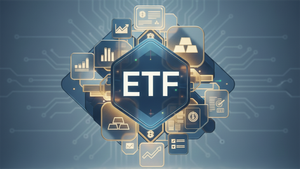
The financial world is witnessing a seismic shift as institutional investors increasingly embrace digital assets, moving them from the fringes of speculative investment to a core component of diversified portfolios. This accelerating adoption, underscored by recent surveys and the active involvement of financial behemoths, signals a profound transformation in how capital is managed and deployed globally. The implications are far-reaching, promising to reshape market dynamics, regulatory landscapes, and the very definition of traditional finance.
A Paradigm Shift: Why Wall Street is Going Crypto
A groundbreaking survey conducted by Coinbase (NASDAQ: COIN) and EY-Parthenon in January 2025, encompassing 352 institutional investors worldwide, provides compelling evidence of this burgeoning trend. The findings reveal a robust and growing appetite for digital assets: a staggering 85% of institutions increased their allocations in 2024, with over three-quarters anticipating further increases in 2025. This isn't just a marginal interest; 59% of institutions plan to allocate over 5% of their assets under management (AUM) to digital assets or related products in 2025. Notably, 38% have already committed between 1% and 5% of funds, with hedge funds showing even more aggressive postures, 22% allocating over 5%. For institutions managing over $500 billion in AUM, 45% now dedicate more than 1% of their portfolio to digital assets, signifying substantial capital inflows from the most traditional corners of finance.
This surge is driven by a confluence of factors, including the pursuit of diversification, attractive risk-adjusted returns, and a hedge against inflation. Institutions are increasingly favoring regulated investment vehicles, with 68% having invested or planning to invest in Bitcoin Exchange-Traded Products (ETPs). Beyond Bitcoin, there's significant interest in tokenization, with 50% of respondents keen on investing in tokenized assets and 31% planning to start by 2026. Stablecoins are also gaining traction, with 84% of institutions utilizing or interested in them for yield generation, transactional convenience, and foreign exchange. The overwhelming sentiment, shared by 94% of respondents, is a belief in the long-term value of blockchain technology and digital assets, with regulatory clarity identified as the primary catalyst for continued growth.
The Titans and Trailblazers: Who Wins in the Digital Gold Rush
The institutional embrace of digital assets has created clear winners, primarily among the financial institutions that have proactively built infrastructure and offered products in this nascent space, as well as companies that have strategically integrated digital assets into their corporate treasuries.
BlackRock (NYSE: BLK), the world's largest asset manager, stands out as a prime example of a traditional finance giant making a decisive pivot. After launching its first Bitcoin investment product in August 2022 and partnering with Coinbase, BlackRock's spot Bitcoin ETF (IBIT) was approved in January 2024, quickly becoming a market leader. Their application for a Spot Ethereum ETF and the launch of the BlackRock USD Institutional Digital Liquidity Fund (BUIDL) on the Ethereum blockchain in March 2024, with ambitions to tokenize $10 trillion of its assets, underscore their deep commitment. BlackRock's view of stablecoins as a "mega force" further solidifies its position at the forefront of digital asset innovation.
Fidelity (NYSE: FNF) has also been a long-term player, engaging in Bitcoin and blockchain research since 2014. Its Fidelity Digital Asset Services, launched in 2018, provides crucial custody and trade execution services for institutional investors. Fidelity's spot Bitcoin ETF (FBTC), approved alongside BlackRock's, is notable for its in-house Bitcoin custody, demonstrating a comprehensive approach to digital asset management. The firm's move to enable Bitcoin options in select 401(k) retirement plans in 2022 further broadens access for a wider range of investors.
Morgan Stanley (NYSE: MS) has distinguished itself as a pioneer among American banks, offering Bitcoin investment options to its wealth management clients as early as 2021. The bank's CEO, Ted Pick, has indicated plans to expand crypto trading processes, driven by client demand, and is reportedly exploring offering crypto trading options to retail clients through E*TRADE. This proactive stance positions Morgan Stanley to capture significant market share as digital asset adoption continues to grow.
Beyond financial service providers, companies like MicroStrategy (NASDAQ: MSTR), now known as Strategy, have emerged as trailblazers in corporate treasury holdings. Pioneering Bitcoin accumulation in 2020, Strategy now holds over 600,000 BTC, accounting for over 70% of all Bitcoin held by public treasury companies. Other firms like Block Inc. (NYSE: SQ) and Semler Scientific (NASDAQ: SMLR) have followed suit, viewing Bitcoin as a strategic reserve asset. These "Digital Asset Treasury Companies" (DATCOs) collectively hold over $100 billion in digital assets, signaling a new era of corporate finance.
While there are clear winners, the "losers" are less about direct financial losses and more about the opportunity cost for institutions that fail to adapt. Banks, asset managers, and financial service providers that remain hesitant or slow to integrate digital assets risk being left behind as client demand shifts and innovative competitors capture market share. The traditional financial landscape is being redefined, and those unwilling to evolve may find their relevance diminished.
Reshaping the Financial Landscape: Broader Implications
The accelerating institutional adoption of digital assets is not merely a niche trend; it represents a fundamental reshaping of the financial landscape with profound implications across industries. This event fits squarely into broader industry trends emphasizing diversification, the search for uncorrelated assets, and the increasing demand for digital-native financial products. Digital assets are no longer seen as purely speculative but as legitimate components of a balanced investment strategy, offering potential for attractive risk-adjusted returns and a hedge against inflation.
The ripple effects on competitors and partners are significant. Other asset managers and banks are now compelled to develop their own digital asset strategies to remain competitive. Fintech companies specializing in blockchain infrastructure, custody solutions, and trading platforms are experiencing a surge in demand and partnerships. The collaboration between traditional finance and crypto-native firms, exemplified by BlackRock's partnership with Coinbase, is becoming increasingly common, blurring the lines between the old and new financial worlds.
Regulatory and policy implications are at the forefront of this evolution. The survey highlighted regulatory clarity as the number one catalyst for growth, and governments worldwide are grappling with how to regulate this burgeoning asset class. The approval of spot Bitcoin ETFs in the U.S. was a landmark event, providing a regulated pathway for institutional investment. New legislation, such as the GENIUS Act, which reinforces the role of stablecoins, indicates a growing recognition and effort to integrate digital assets into existing financial frameworks. However, concerns remain, particularly regarding pension fund investments, with some advocating for statutory prohibitions due to volatility and structural risks. The ongoing dialogue between regulators and industry participants will be crucial in shaping the future of digital asset markets.
Historically, this shift can be compared to the emergence of new asset classes or technological advancements that fundamentally altered financial markets, such as the rise of derivatives or the internet's impact on trading. Just as these innovations initially faced skepticism but eventually became integral to the financial system, digital assets are following a similar trajectory, driven by institutional validation and technological maturity.
The Road Ahead: What Comes Next
The trajectory of institutional digital asset adoption points towards continued growth and integration into mainstream finance. In the short term, we can expect to see a further increase in AUM allocation to digital assets, driven by the positive experiences of early adopters and the increasing availability of regulated investment products. The success of spot Bitcoin ETFs is likely to pave the way for more diversified digital asset ETPs, including those for Ethereum and other altcoins, catering to a broader range of institutional investment mandates.
Long-term possibilities include the widespread adoption of tokenization across various asset classes, from real estate to private equity, transforming illiquid assets into easily tradable digital tokens. This will unlock new liquidity and investment opportunities, fundamentally altering capital markets. Traditional financial institutions will likely continue to deepen their integration with blockchain technology, building out their own digital asset infrastructure and offering a wider array of crypto-native services. This could lead to strategic pivots, with banks and asset managers evolving into comprehensive digital asset service providers.
Market opportunities will emerge in areas such as decentralized finance (DeFi) for institutional use, advanced digital asset analytics, and specialized custody solutions. Challenges will include navigating evolving regulatory frameworks, managing cybersecurity risks associated with digital assets, and educating a broader base of institutional investors on the nuances of this new asset class. Potential scenarios range from a seamless integration of digital assets into the existing financial system, leading to a more efficient and inclusive global market, to a more fragmented landscape with varying regulatory approaches across jurisdictions.
Conclusion: A New Era of Finance
The accelerating institutional adoption of digital assets marks a pivotal moment in financial history. The findings of the Coinbase and EY-Parthenon survey, coupled with the proactive involvement of financial titans like BlackRock, Fidelity, and Morgan Stanley, unequivocally demonstrate that digital assets are no longer a niche curiosity but a legitimate and increasingly essential component of institutional investment strategies. The days of dismissing cryptocurrencies as mere speculative fads are rapidly drawing to a close.
Moving forward, the market will likely witness continued innovation in product development, with a focus on regulated and accessible investment vehicles. The ongoing dialogue between industry and regulators will be critical in establishing clear and consistent frameworks that foster growth while mitigating risks. The increasing allocation of AUM by institutional investors, including pension funds and corporate treasuries, signals a profound shift in capital allocation, with digital assets poised to play a significant role in global portfolios.
Investors should closely watch for further regulatory developments, particularly around stablecoins and tokenized securities, as these will significantly influence the next wave of institutional adoption. New product launches from both traditional finance and crypto-native firms, as well as strategic partnerships between these entities, will also be key indicators of market direction. The lasting impact of this trend will be a more digitized, interconnected, and potentially more efficient global financial system, where digital assets are an integral part of the investment landscape. The digital tsunami has arrived, and its waves are reshaping the shores of finance for generations to come.





